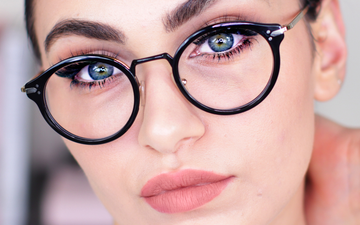
If you’ve ever worn glasses in cold weather, while cooking, or under a face mask, you’ve likely experienced the frustration of lens fogging. It can be annoying, inconvenient, and even dangerous, especially for those who rely on glasses for clear vision.
That’s where anti-fog glasses come in—but do they actually work? In this blog, we’ll dive into how anti-fog technology functions, its effectiveness, and whether it’s worth investing in.
What Causes Glasses to Fog Up?
Fogging happens when warm air meets a cooler lens surface, creating tiny water droplets that scatter light and obstruct vision. This is common in situations like:
Wearing a face mask (breath escapes upwards and condenses on lenses).
Moving from cold to warm environments (e.g., stepping indoors on a winter day).
Exercising or sweating (body heat and moisture create condensation).
Drinking hot beverages (steam rises and fogs lenses).
How Do Anti-Fog Glasses Work?
Anti-fog glasses use special coatings or treatments to prevent condensation from forming on the lenses. The two main types of anti-fog solutions are:
1. Anti-Fog Coated Lenses
Some glasses come with a built-in anti-fog coating, applied during the manufacturing process. This coating:
✔ Helps spread moisture evenly across the lens instead of forming droplets.
✔ Reduces fogging for a longer period without reapplication.
✔ Works well in everyday conditions, but effectiveness can decrease over time.
2. Anti-Fog Sprays and Wipes
For glasses that don’t have a built-in coating, anti-fog sprays or wipes can be applied as needed. These products:
✔ Create a thin, water-repellent layer on the lens.
✔ Provide temporary anti-fog protection.
✔ Require reapplication after a few hours or when cleaned off.
Do Anti-Fog Glasses Actually Work?
✅ When They Work Well
Anti-fog glasses are effective in moderate temperature changes and everyday use, especially for people who:
Wear masks and glasses simultaneously.
Work in humid environments (e.g., kitchens, medical fields).
Engage in outdoor activities like skiing, cycling, or running.
⚠ When They Have Limitations
Despite their benefits, anti-fog coatings aren’t 100% foolproof. Their effectiveness can be reduced by:
Frequent lens cleaning, which may wear off the coating.
Extreme temperature shifts, where condensation may still occur.
Improper maintenance, like using harsh cleaners that degrade the coating.
Alternatives to Anti-Fog Glasses
If you’re dealing with persistent fogging but don’t have anti-fog glasses, you can try:
Adjusting your face mask: Make sure it fits snugly over your nose to reduce warm air escaping.
Using dish soap: A thin layer of mild dish soap wiped off with a soft cloth can provide a temporary anti-fog effect.
Choosing well-ventilated frames: Glasses with anti-fog vents or open sides allow better airflow.



